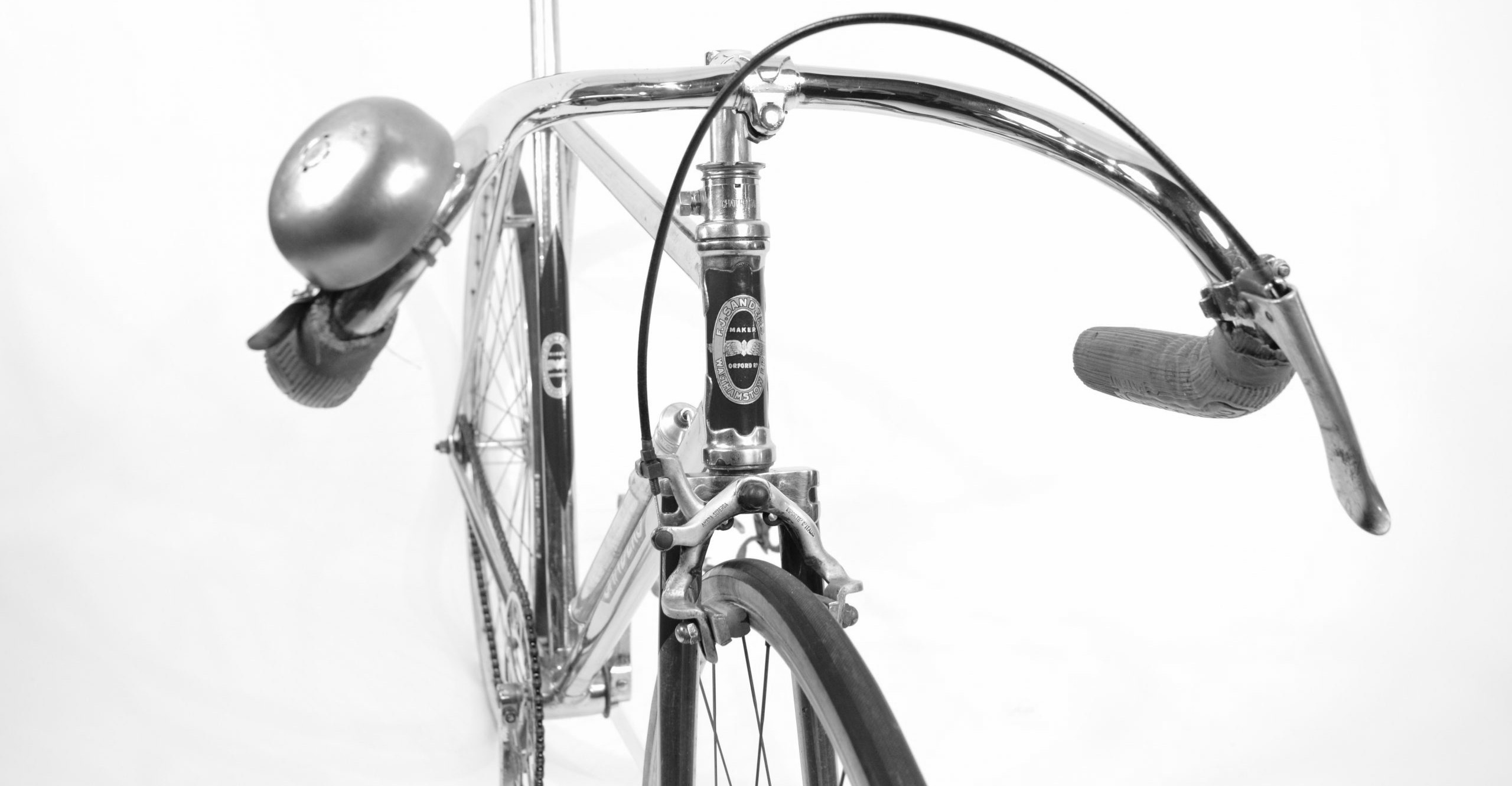The 20th century British and colonial 'path' cycle racing tradition
Posted: Sunday 16th August 2020
There are reminders of empire in the millions of people of British descent in Australia, Canada, New Zealand and South Africa the cult of sport was made for the cult of empire. There was something in the conventions of a game – loyalty to the team, obedience to the rules, unquestioning respect for the authority of the referee – which spoke of the imperial design.
Jeremy Paxman (2011) Empire: What ruling the world did to the British.
In the Anglophone cycling world of the late Victorian era, an oval cycle racing track was commonly referred to as being a ‘path’ and this term continued to be used subsequently. Since a distinctive form of organised track racing flourished in both Britain and the overseas settler-colonies of its empire for much of the 20th century, this can be called ‘path racing’. As the British Empire dissolved in the latter half of the century, this tradition disappeared. Today it is all but forgotten, having been replaced globally by a uniform track sport.
How did this uniquely Anglocentric ‘path’ form of track sport originate? What were its leading features? What sporting influences and currents flowed between Britain and its settler-colonies in its heyday? What factors led to the tradition’s decline? This article explores these questions.
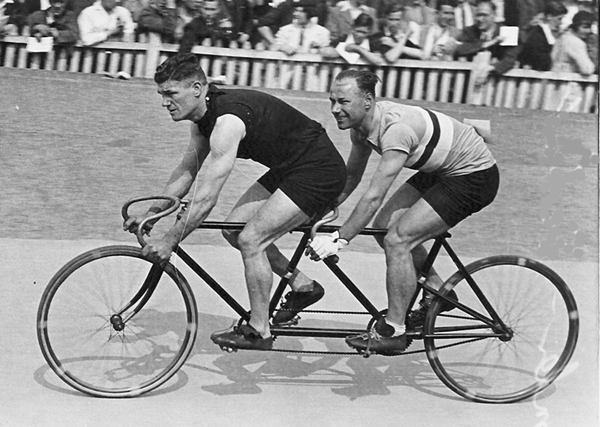
Origins: cycle sport in the late 19th century
In the late 1800s, the invention of the modern diamond frame ‘safety’ bicycle with chain drive and pneumatic tyres massively popularised cycling as both a pastime and a sport. Cycle racing on the open road and on oval tracks soon flourished in many countries. International competition rapidly increased, leading to the formation of the International Cyclists’ Association (ICA) in 1892. Cycling interests in Britain, which was then the world’s superpower with an empire on which ‘the sun never set’, had initiated the establishment of the ICA and British representatives dominated the organisation from the outset.
Cycle sport in Victorian Britain was, as were many other sports at that time, deeply divided along social class lines. Competitors seen as profiting financially from sport were labelled ‘professionals’ and rejected as equals by those who identified with the austere amateur sporting ideals of the aristocratic public schools. Any sporting contact between amateurs and professionals was forbidden and this strict amateur code was enshrined in the statutes of the ICA.
In 1893 the ICA held the first of its annual official amateur world track championship meetings in Chicago in the United States. In 1895 the ICA introduced professional world track titles as well. Conflict, much of it centred on the issue of strict amateurism, nevertheless continued to escalate within the organisation. Ultimately, in 1900 an influential group of dissident cycling nations – Belgium, France, Italy, Switzerland and the United States – broke away from the ICA and formed the rival Union Cycliste Internationale (UCI). The ICA continued but, with its membership effectively reduced to a handful of Anglocentric amateur cycling associations, it could not survive.
Despite these loyalist national cycling bodies all subsequently belatedly affiliating to the UCI, this had scant effect upon their distinctively British amateur track racing tradition. They were all to remain aloof from the UCI for decades, harbouring bitter memories of the 1900 coup d’état which had undermined the ICA.
The hallmarks of 20th century British and colonial ‘path’ racing
While there were both national and regional differences between organised track racing as practised in Britain and across its empire, there was nevertheless an underlying pattern common to all. In short, the sport as pursued in the different constituent countries shared a close family resemblance. Those familiar with the sport in one of these countries could easily adapt to it in another. Specifically, the shared features were that it was:
- A male preserve;
- Based on a strict amateur code for competitors, officials and administrators;
- A summer sport;
- Held on large outdoor tracks;
- Composed of events based on the Imperial mile;
- Handicap racing-oriented; and
- A distinctive subculture with its own lingua franca.
While women’s track racing did occur in the late 19th century the sport was essentially a male preserve. Not only was it strictly amateur but this principle was a source of pride and a cornerstone of the ‘path’ tradition. Amateur clubs formed the backbone of the sport, mentoring newcomers and encouraging members to achieve racing successes in the name of the club. Moreover, the amateur code was rigorously enforced by the sport’s officials and administrators all of whom were ‘honorary’, serving the sport voluntarily. Many were former cyclists who were dedicated to preserving the tradition through involving themselves in committee work and officiating at race meetings. They formed ‘councils of the wise’, guiding and controlling the sport in the established manner.
Given the nature of the British climate, cycle sport in Britain was an outdoor summer pursuit, and this was adopted in the settler-colonies despite the generally milder winters of those in the southern hemisphere. The summer track season was composed of a succession of regular race meetings. The venues varied from makeshift temporary grass tracks at the one extreme to purpose-built hard surface tracks at the other. The oval tracks were generally at least 400 yards in circumference and often substantially more. In many instances the cycle tracks or ‘paths’ enclosed athletics tracks with joint cycling and athletics meetings often being held at these venues. The permanent hard tracks generally had shallow bankings of no more than 15 degrees at their steepest points.
The track events at typical race meetings included short distance events – generically termed ‘sprints’ – as well as those over longer distances, but all were based on the Imperial mile. The ‘quarter mile’ (440 yards) was a hotly contested dash over one lap or less with up to eight riders competing. It carried considerable prestige and was a race for sprinters. The ‘one mile’ was also a prestige event. At the other extreme, the ‘25 mile’ was the supreme distance race. These three were invariably championship title events and their winners enjoyed the highest esteem.
The individual events themselves were either scratch or handicap races. In the former, all competitors started together; in the latter, riders started at staggered intervals around the track. The official handicapper thus played a key role at track meetings, deciding on the starting position of every rider in terms of yardage in relation to scratch. For instance, in a one mile handicap only the best-rated riders would be placed on scratch (or, in some cases, even several yards behind scratch) and cover the full distance while lesser-rated riders would be given varying advantages over scratch.
The handicapper’s aim was to enable the strongest scratch rider to win the race by overhauling the weaker riders ahead. This ‘stronger versus weaker riders’ system, with upset results always a possibility, made for exciting, crowd-pleasing racing. Record times for the various established distances were officially noted as benchmarks. For the shorter standard distances, official individual time trial attempts were regularly made on both standing and flying start record times by riders currently in form.
As a whole, the tradition of British and colonial track racing formed a complex subculture with its own argot, aesthetics, status symbols, hierarchies, mythologies and fashions:
- Gear ratios (single fixed) were uniquely discussed in terms of inches – ranging from the low 80s through the 90s to 100 inches – which ultimately related hypothetically to the large front wheel diameter of the obsolete Ordinary;
- Track racing machines and equipment were ranked in terms of their perceived quality and finish as well as functionality, with various designs and brands being fashionable in different periods;
- Riders were differentiated and ranked in terms of their talents and achievements;
- Valuable, often historic, trophies formed the major racing prizes;
- Outstanding riders and performances became legendary and were enshrined in the mythology of the sport;
- Top riders were the style leaders who established new fashions in racing machines, equipment and apparel; and
- Secrecy and a ‘code of silence’ generally surrounded training regimes, racing skills and race tactics. This was a body of craft knowledge selectively transmitted to successive generations of riders by wily coaches and older riders experienced in the folkways and also the ‘darker arts’ of the sport.
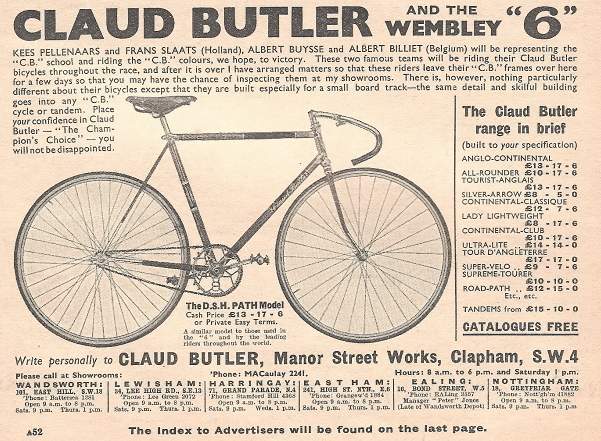
International influences and contacts within the ‘path’ tradition
Track racing requires specialised equipment and, for much of the 20th century, Britain was a major producer of lightweight machines and equipment suitable for track racing. While limited numbers of lightweight racing frames were built locally (Malvern Star and Speedwell in Australia, CCM in Canada, Clarks and Comet in New Zealand and DHC in South Africa), Britain was the major source for these in the colonies.
Most frames which found their way there were from the larger lightweight builders like Carlton, Claud Butler, Dayton, Hobbs of Barbican, Saxon, Selbach, Sun and Viking. The equipment was also almost exclusively sourced from Britain: Airlite hubs, Brooks saddles, Williams, BSA and Chater Lea cranks and chainwheels, Reynolds chains, Dunlop tubulars, GB handlebars and stems, Conloy rims and Constrictor tubulars. In addition, the inch-pitch block chain was long favoured by British and colonial trackmen. Small local specialist retail cycle shops often operated by leading local cyclists both in Britain and scattered across the empire were the primary distributors. Complex informal supply chains and networks connected these and underpinned the sport.
The riders, officials, administrators and spectators involved were also geographically mobile. Amongst the many who emigrated from Britain were cycling enthusiasts who readily adapted to the sport as pursued in their new colonial environments. Initially, the Olympic Games were one of the few regular occasions on which international competition occurred between British and colonial cyclists. The 1908 London Olympics included cyclists from both Britain and the settler-colonies. Benjamin Jones, who won gold medals in both the 5000m and the team pursuit for Britain at these Games, was one who later settled in South Africa. At the 1912 Stockholm Olympics, the only cycling event included was the individual road time trial over 320 km. The South African, Rudolph Lewis, won the gold medal with the Englishman Freddie Grubb second.
After World War I, contacts between followers of the tradition in different countries increased, with official national teams and leading individual riders travelling abroad to compete. In the southern summer of 1921/1922, a composite team of athletes and cyclists from South Africa toured Australia and New Zealand. This followed contacts made at the 1920 Olympics in Antwerp, Belgium. In 1930, the first British Empire Games were held in Canada but did not include cycling events.
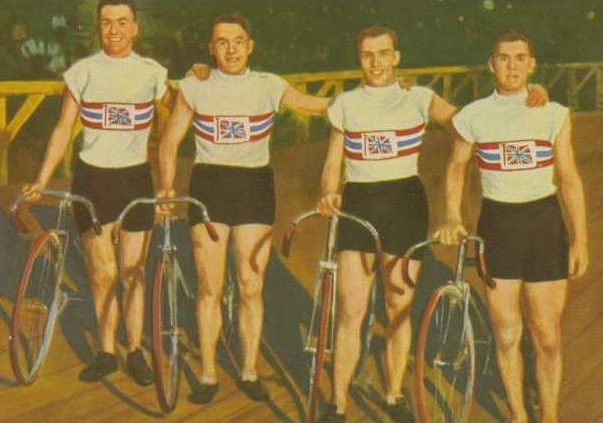
The 1934 Empire Games in Britain saw the track titles – 1000m individual TT and 10 mile scratch – contested at Manchester’s Fallowfield stadium. In 1938 the Games were held in Sydney, Australia, with the same two track titles plus the match sprint being included. The Empire Games served to intensify contact between cyclists following the tradition and this continued after WWII. Renamed the Commonwealth Games, the 4000m individual pursuit and the tandem sprint were added to the track programme.
In marked contrast, participation in the annual UCI world championships by both British and colonial cyclists in the interwar years remained decidedly rare. The UCI amateur track titles of this period were limited to the match sprint which was not integral to the Anglophone track racing tradition. It was only in the decades following WWII that changes began to occur. Reg Harris’ winning of the world amateur match sprint title in 1947 was the first UCI world title to be won by an English-speaking rider in nearly 30 years. While this hinted at changes in the British and colonial track racing tradition, fraternal links persisted. For instance, three British NCU track teams toured South Africa and Rhodesia in 1948, 1952 and 1961, respectively.
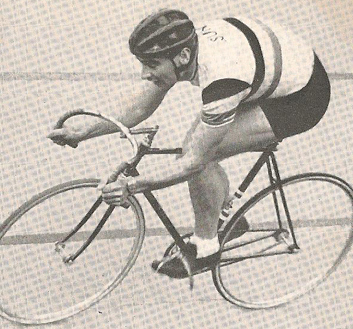
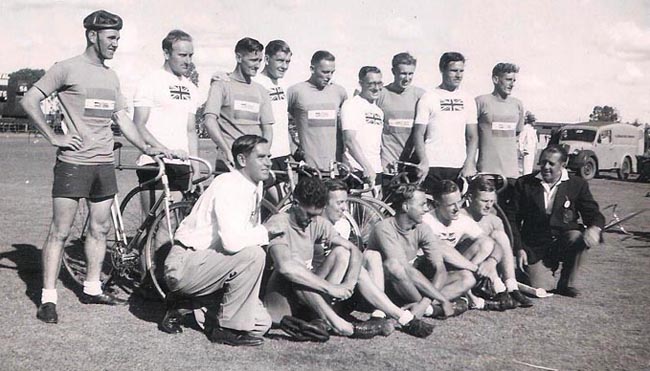
From ‘paths’ to velodromes: the slow decline of the Imperial track racing tradition
Key features of the ‘path’ tradition did not disappear overnight. Rather, the changes occurred in piecemeal fashion over several decades. This process began to gather momentum in the 1930s and extended through into the last decade of the 20th century.
Racing based on the Imperial mile began to disappear increasingly over the course of the 20th century, being replaced by events based on the metric system. With both the Olympics and the UCI world championships using metric measures, pressure for changes increased and modifications to the ‘path’ tradition began in the interwar period. The 1000m individual time trial, which was an Olympic event, was the first to be widely adopted, followed by the 1000m match sprint, the 2000m tandem match sprint and both the 4000m individual and team pursuits.
Coinciding with the adoption of the metric system was a general decline in handicap racing. With the new prestige metric-based events, the handicap race had little place or purpose other than entertainment value. Instead handicaps were replaced by scratch races over 10 and 20 kilometres.
Internationally, the sport as an exclusive male preserve was first seriously challenged in the late 1950s by the UCI’s introduction of women’s world titles (match sprint; 3000m individual pursuit) in 1958. The state socialist nations of Eastern Europe were largely responsible for this change. The UCI’s example was belatedly followed by the Olympics, with track cycling events for women being introduced in 1988 at the Seoul Games in South Korea after a women’s road race had first been held at the 1984 Los Angeles Olympics.
The demise of strict amateurism within the ‘path’ tradition was a protracted process. There had long been ‘maker’s amateurs’ and also ‘shop amateurs’ – top riders who were discreetly assisted by cycle manufacturers and bicycle retailers in cash and/or kind. Beginning in the early 1960s, the sponsorship of amateur clubs was allowed. Club members retained amateur status but were provided with expenses by their clubs. With the Olympic movement’s total abandonment of the amateur/professional distinction in 1992, organised cycling quickly followed suit in 1993. The era of strict amateurism, which had been an issue for decades, was finally over.
The ‘path’ tradition of track racing as a purely summer sport on large, shallow-banked outdoor tracks persisted, but internationally steep indoor velodromes of 250m per lap or less became more favoured in the latter part of the 20th century. The sport at the highest level became increasingly indoor velodrome-based. Being impervious to the weather, track racing could now be held in all seasons in nations affluent enough to have indoor velodrome facilities.
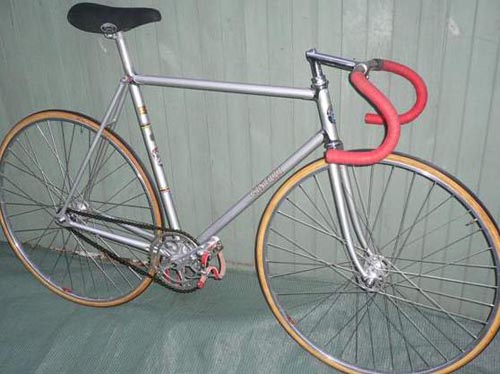
Finally, along with all these changes, the ‘path’ subculture itself evaporated. The old inches gearing language declined as did the favouring of the inch-pitch block chain, British manufacturers of framesets and components were largely superseded by Italian producers (Frejus, Cinelli and Legnano frames, Campagnolo chainsets, hubs and pedals, Fiamme rims, Cinelli handlebars and stems, Clement tubulars, plastic Unica saddles), national and international titles were increasingly ranked higher than trophies and new types of champions lionised. From the 1950s onwards, a new elite exemplified by Continentals like Fausto Coppi and Eddy Merckx who excelled primarily in en ligne road racing and also set hour records on the track, became the international role models. It was they who set new fashions in events, racing machines, equipment and apparel.
Each and every one of these changes served to further weaken the ‘path’ tradition until a point was reached in the late 20th century where, while vestiges of it may have survived on the margins of the sport, to all intents and purposes it had ceased to exist.
Today, it has been entirely replaced worldwide by the ‘cult of the indoor velodrome’.
References
Jowett, Walter (1982) Centenary: 100 years of organised South African cycle racing. SACF.
Paxman, Jeremy (2011) Empire: what ruling the world did to the British. London: Viking.
Ritchie, Andrew (2011) Quest for Speed: a history of early bicycle racing 1868-1903. El Cerrito, CA: Andrew Ritchie.
Underwood, Peter (2013) Dennis Horn-racing for an English rose. Norwich: Mousehold Press.
www.classiclightweights.co.uk ‘Lightweight Extras’; ‘Readers Bikes’.
Posted: Sunday 16th August 2020
This article appears in the following categories.
Upcoming Events
Whether you are looking for a gentle social meet up, or a 100-mile ride browse the community’s upcoming events and plan your next weekend outing.
